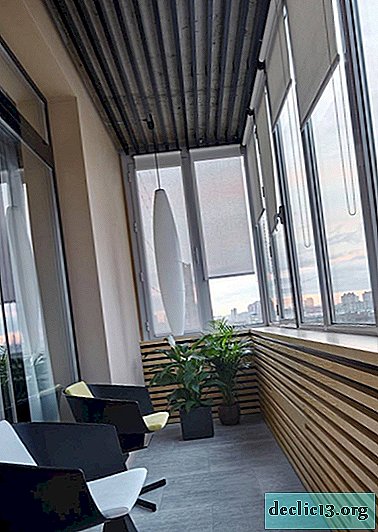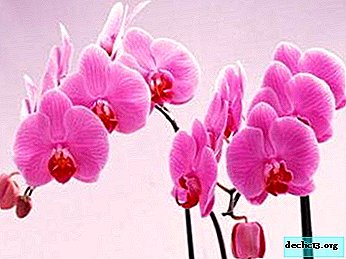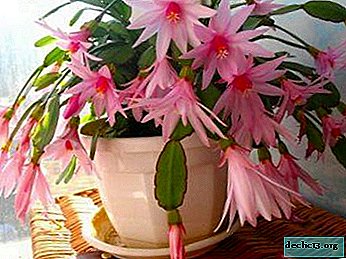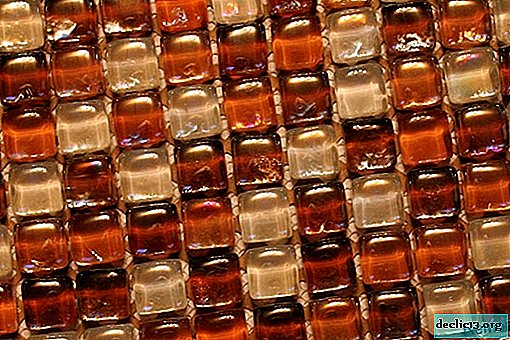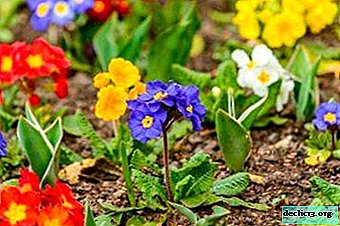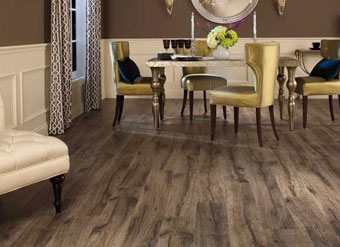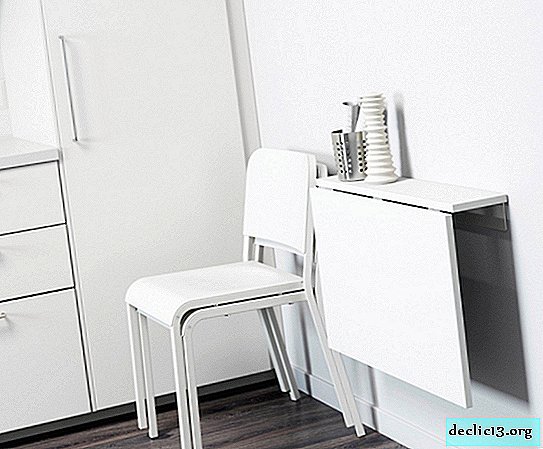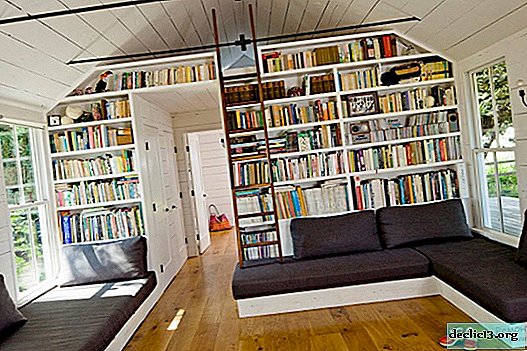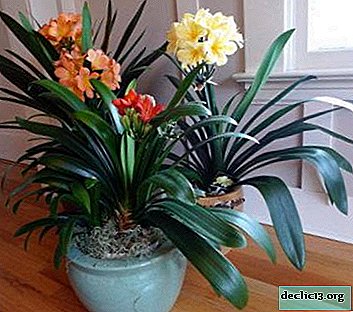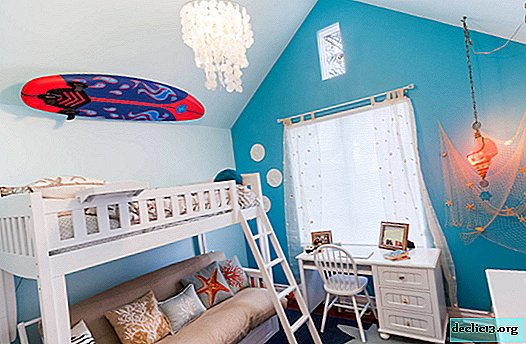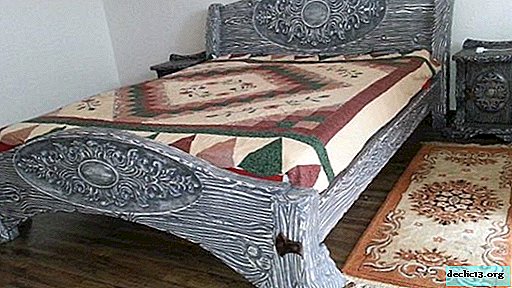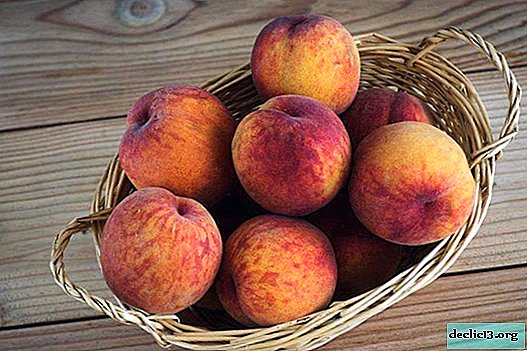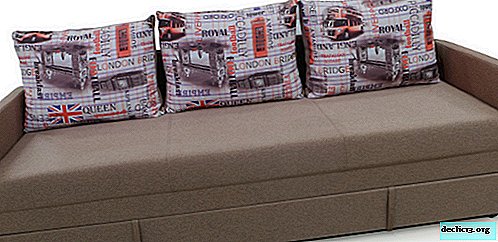Flamingo flower - a luxurious decoration of the interior. Dakota Anthurium Care Tips and Plant Photos
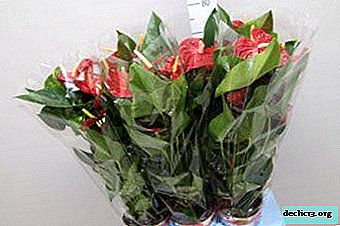
Anthurium Dakota is an original indoor plant that will bring bright colors to your interior.
If it is properly looked after, it will bloom almost all year round. It is also grown in greenhouses to cut flowers.
Anthurium is quite capricious, suitable only for experienced gardeners for whom caring for plants is a pleasure, not a burden. In the article, we consider the features of reproduction and caring for the plant.
Botanical Description
Anthurium dakota (Anthurium andraeanum dacota) is also called male happiness, since this is one of the few plants that are customary to give to men. Another name is a flamingo flower, apparently due to the fact that flowering with a long cob and one petal reminded someone of this bird. In the people it is also called the damn language or the pig tail. Belongs to the family of evergreens of the Aronnikovy (Aroid) family.
History of occurrence
The very first cultivated species of anthurium was Andre. This is a hybrid that differs from anthuriums that grow in the wild. All indoor anthuriums are hybrids. From the view of Andre, the breeders brought the Dakota. Florists call this anthurium an improved version of Andre.
Appearance and photo
The leaves are dark green swept or heart-shaped. They can grow at home up to 40 cm in length. The height of the plant reaches 110 cm. Dakota has a very large inflorescence, consisting of an ear of corn and one petal, called a veil. The flower is red, and the ear is bright yellow (see varieties with a red flower here). The size of the bedspread is from 14 to 23 cm, that is, the flowering is large and spectacular.





Habitat
In nature, botanists number about 900 species of anthuriums that grow in the tropical forests of South and Central America. Many of the wild plants are epiphytes with aerial roots, that is, they grow on other plants, but do not parasitize on them. There are also tree and land views.
Home Care
Temperature
The plant is thermophilic and quickly dies under severe hypothermia. The ideal air temperature for it is +28 degrees, that is, the anthurium will delightfully feel even in the summer heat. On warm days, he can stand on the window with an open window, but so that wind gusts from the street do not reach him.
Wintering
It is important that in winter the room temperature does not fall below +16 degrees. This is the critical temperature that the plant can still withstand, with a further decrease in it, the anthurium will die. In winter, put the pot with the plant away from the batteries, as there is too dry air. You can not keep anthurium in a cold window.
Watering
Only filtered water that is allowed to stand at room temperature for at least 24 hours is suitable. Anthurium Dakota needs good watering, but without fanaticism, so as not to turn the soil in the pot into a non-drying swamp. Excessive watering will destroy the plant. Anthurium needs moisture in the air, and not constantly wet roots.
 It is not necessary to wait for the soil to dry completely in the pot, it is necessary to water when the top layer has dried. Soil is soaked all, so that the water begins to pour a little out of the panYou can’t leave it there, you must immediately drain it. If the room has high humidity, for example, if there is a large aquarium, the anthurium can absorb moisture from the air, so the earth in the pot can remain wet for weeks. In this case, you need to wait for the top layer to dry, then water it.
It is not necessary to wait for the soil to dry completely in the pot, it is necessary to water when the top layer has dried. Soil is soaked all, so that the water begins to pour a little out of the panYou can’t leave it there, you must immediately drain it. If the room has high humidity, for example, if there is a large aquarium, the anthurium can absorb moisture from the air, so the earth in the pot can remain wet for weeks. In this case, you need to wait for the top layer to dry, then water it.
If the room has dry air, you will have to water more often, as well as take care of hydration. To do this, spray water around the plant with a spray gun, but it is impossible for the drops to fall on the leaves, they leave ugly stains on them. Dust from the leaves of anthurium dakota wipe with a damp cloth. You can also wash the plant in the bathroom, but so that water does not fall on the flowers.
Important! Dakota Anthurium is very harmful by sudden changes in humidity in the room, for example, when the heating is turned on. They should be tried to smooth out.Starting in September, the intervals between irrigation are gradually increased so that the plant blooms more abundantly.
Shine
This is a shade-tolerant plant, but it will not bloom too far from the window. Eastern and western windows are suitable for him. He does not like direct sunlight, so it is necessary to create diffused light.
Priming
Well-drained and lightweight is needed so that water quickly penetrates the roots, as well as air access. In heavy soil, anthurium will die due to rotting roots. The best option would be a special primer for the aroid from the store for gardeners.
You can also make a mixture of peat, chopped moss and turf land (2: 2: 1), or from deciduous land, peat and sand (in equal proportions) with the addition of a small amount of charcoal and coniferous bark. Another option for the soil: coarse fibrous hardwood, chopped swamp moss and light turf land (2: 1: 1). You can add pine bark, coconut "chips" (large pieces of bark). 1/3 of the height of the pot must be laid drainage.
Pot
Tall pots are more suitable. Young plants, which are transplanted every year, increase the size of the pots gradually, based on the size of the root system.
Important! Ceramic pots are not suitable for Anthurium, it is better to choose plastic.Top dressing
In spring and summer, fertilizers are applied every 2-3 weeks. The best top dressing is azofoska at a concentration of 1 g / l with the addition of potassium humate in an amount of 200-300 mg / l. Anthurium Dakota can be fed with organic fertilizers. For this, cow or horse manure, leaf humus are applied to the surface of the soil, or they are watered with chicken manure infusion (not more than once a month).
Pruning
- To do this, use a clean pruner or knife.
- You can trim damaged leaves.
- The flower stalk must be cut off after flowering, so that seeds do not begin to form, which will pull all the forces of the plant onto themselves.
- Aerial roots cannot be cut, only dry or diseased ones can be removed.
Transfer
 The best time to transplant is springbut if anthurium is acquired at another time of the year, they give him a couple of weeks to adapt and transplant.
The best time to transplant is springbut if anthurium is acquired at another time of the year, they give him a couple of weeks to adapt and transplant.
Reference. In stores, the plants are in very tight pots, where the roots are braided over a whole lump of soil, so they must be transplanted into more spacious ones after purchase.
- Blooming Anthurium can be transplanted only by transshipment. To do this, at first, water the plant well so that the entire soil becomes wet.
- Extract the plant from the old pot along with the entire clod of earth. You cannot shake or straighten the roots.
- They are placed in the center of a pot of suitable size to the same depth.
- In the new pot, 2-3 cm should remain from the root to the walls.
- Pieces of bark or charcoal are placed at the bottom.
- On all sides, the transplanted plant is sprinkled with soil.
After this, the anthurium is transplanted into a slightly larger pot every spring.
Important! The plant is poisonous, be careful when transplanting and do not allow pets, birds to bite off the leaves.Propagation Features
Dividing the bush
- With an annual transplant, if the bush has grown too much, you need to water it well and remove it from the pot.
- Put the roots of the plant in a basin with water and carefully straighten them.
- Find the base of the stems and carefully divide the bush into two or more small ones.
- Each plant in a separate pot.
Cuttings
- With a sharp knife, cut off part of the plant with the stem, the beginnings of aerial roots and 2-3 leaves.
- Plant it in a pot with moist sphagnum moss so that only leaves and the top of the stem remain on top.
- It is necessary to keep the moss moist, in a couple of weeks the stalk will take root and begin to grow.
Seeds
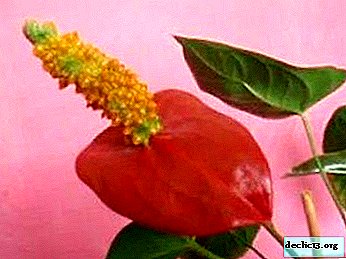 Pollinate yourself, using a soft brush, transferring pollen from the stamens to the pistils.
Pollinate yourself, using a soft brush, transferring pollen from the stamens to the pistils.- The berries ripen for about 8 months.
- Collect them, get seeds and rinse.
- Sow in soil suitable for anthurium, sprinkling literally 1 mm of soil.
- The pot should stand in the light at an air temperature of + 20-25 degrees.
Propagation by seeds is the longest and most difficult way.
Diseases and Pests
- Green or brown growths at the bottom of the leaves are an avocado scab, washed off with soapy water.
- Small white or gray moths - aphids, treated with an aphid remedy, washed off with water in a day.
- Dots on leaves, spots, yellowing - there is little light and moisture.
- The tips of the leaves are brown and curl - soil with an excess of calcium.
- A whitish coating on the leaves and stems is gray rot, cut off the affected parts and treat with “Topsin”.
- Brown spots on the leaves with a yellow border - septoria, are treated with copper sulfate.
- The veins are green, and the whole leaf turns yellow - chlorosis, additional nutrition with iron and magnesium is necessary.
Similar flowers
- Spathiphyllum.
- Calla.
- Alocasia.
- Caladium.
- Wingfly.
Despite the capriciousness of care, Anthurium Dakota will become a luxurious decoration of your collection of home plants. With and without flowering, it looks spectacular.

 Pollinate yourself, using a soft brush, transferring pollen from the stamens to the pistils.
Pollinate yourself, using a soft brush, transferring pollen from the stamens to the pistils.